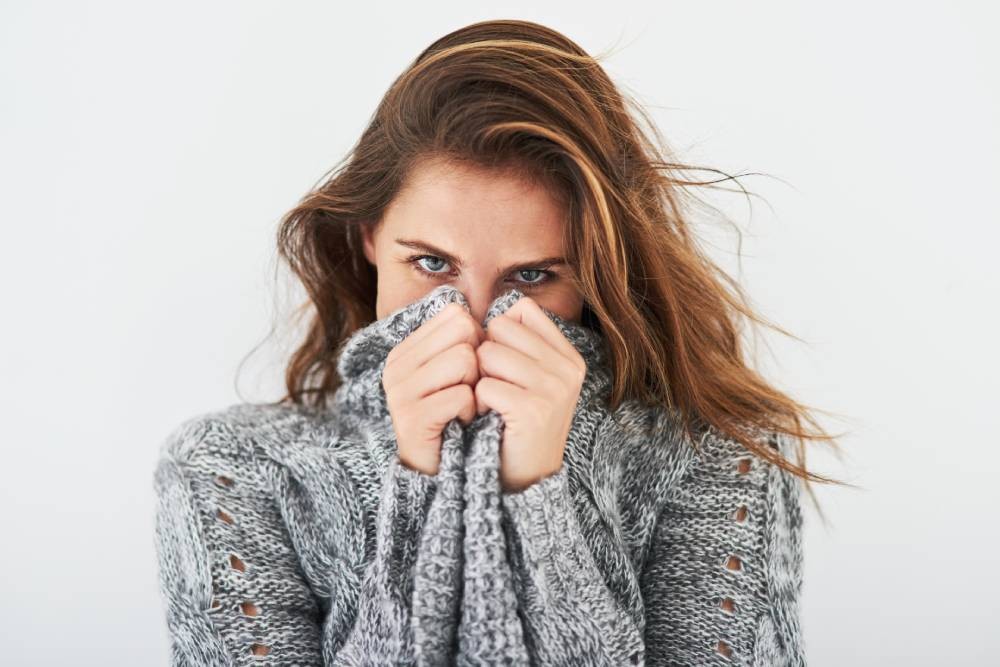What is the Texture of Your Vaginal Discharge Telling You?
Along with the color and odor of your vaginal discharge, the texture can tell quite a bit about what may be going on with your cycle and with your health. Normal vaginal discharge is usually clear or milky white. It may have a subtle scent, but it’s not unpleasant. Changes in texture can take place as you move through the weeks of your menstrual cycle. But some textures (when accompanied by other symptoms) are not normal, and can be an indication that you may have a yeast infection or other type of infection. Here are some common textures that women may experience in their vaginal discharge, along with what it may be, other symptoms involved, and what you can do.
|
Texture |
It Could Be… |
Other Symptoms |
What You Can Do |
|---|---|---|---|
|
Thick, white and clumpy like cottage cheese |
Vaginal Yeast Infection |
Vaginal itching, burning, soreness, or pain—some women experience pain when urinating or having sex along with redness, swelling or rash around the vulva |
Talk to your healthcare professional*, or take the Vaginal Health Test, then reach for Monistat® --it comes in three doses to meet your treatment needs |
|
Thin with an unpleasant, foul smelling or fishy odor |
Bacterial vaginosis |
White, gray or yellowish vaginal discharge, itching or burning, and a slight redness and swelling of the vagina or vulva; odor is strongest after sex or after washing with soap |
This is not normal – Talk to your healthcare professional |
|
Watery or bubbly with an unpleasant odor |
Trichomoniasis |
Yellowish or greenish vaginal discharge, pain and itching when urinating, with symptoms most apparent after your period |
This is not normal – Talk to your healthcare professional |
*Always see your healthcare professional if this is your first yeast infection.
Recognizing Normal and Abnormal Discharge
Normal vaginal discharge is usually clear or milky and may have a subtle scent that is not unpleasant or foul smelling. Changes that may signal a problem include an increase in the amount of discharge, a change in the color, smell or texture of the discharge. You may also experience other symptoms with a change in discharge, such as irritation, itchiness or burning in or around your vagina. The combination of these factors can help reveal what may be going on in your body. A vaginal discharge is considered abnormal if it is:
- Heavier than usual
- Thicker than usual
- Pus-like
- White and clumpy (like cottage cheese)
- Grayish, greenish, yellowish, or blood-tinged
- Foul- or fishy-smelling
- Accompanied by itching, burning, a rash, or soreness
Only you know your body. If you have vaginal discharge that doesn’t seem normal for you (with or without other symptoms), talk to your healthcare professional.
Check Your Symptoms
See what your vaginal discharge and other symptoms may be telling you.


Do you have a yeast infection?
Answer a few questions and find out what your symptoms mean.
Which MONISTAT® Product is Right for You?
MONISTAT® 1
Monistat® 1 Combination Pack is a single-dose product (1200 mg of miconazole nitrate) may be the perfect solution for busy women with active lifestyles. Available in Ovule® form. Use as directed.
MONISTAT® 3
MONISTAT® 3 is a great treatment option for women who want a less concentrated treatment (200 mg of miconazole nitrate per dose) that provides consistent treatment and relief at moderate dosage levels. Available in Ovule®, cream and suppository forms. Use as directed.
MONISTAT® 7
The MONISTAT® 7 suite of products is the original formula (100 mg of miconazole nitrate per dose), with smaller doses of the active ingredient evenly distributed throughout the week at bedtime. The CDC recommends 7-day treatment for pregnant women and diabetic women (consult a doctor before use). Available in cream form. Use as directed.
All MONISTAT® products relieve yeast infection symptoms 4x faster than the leading prescription pill.
Opinions, content and any information expressed on or linked with this website, are intended to be general in nature and do not constitute medical advice, diagnosis or treatment. Always seek medical advice from your professional healthcare provider.
Monistat FAQ
Get answers to questions from women just like you.
